 W
WThis is a bibliography of renewable energy.
 W
WApollo's Fire: Igniting America's Clean Energy Economy is a 2007 book by Washington State Governor Jay Inslee and researcher Bracken Hendricks. Inslee first proposed an Apollo-scale program, designed to galvanize the nation around the urgent goal of solving the environmental and energy crisis, in the Seattle Post-Intelligencer in 2002. Eventually Inslee co-authored Apollo's Fire, in which he says that through improved Federal policies the United States can wean itself off of its dependence on foreign oil and fossil fuel, create millions of Green-collar worker jobs, and stop global warming. Along these lines, he has been a prominent supporter of the Apollo Alliance.
 W
WBrittle Power: Energy Strategy for National Security is a 1982 book by Amory B. Lovins and L. Hunter Lovins, prepared originally as a Pentagon study and re-released in 2001 following the September 11 attacks. The book argues that the U.S. domestic energy infrastructure is very vulnerable to disruption, whether by accident or malice, often even more so than US technology is vulnerable to disruption of the imported oil supply. According to the authors, a resilient energy system is feasible, costs less, works better, and is favoured in the market, but is rejected by U.S. policy. In the preface to the 2001 edition, Lovins explains that these themes are still very current.
 W
WCarbon Shift: How Peak Oil and the Climate Crisis Will Change Canada is a 2009 non-fiction book edited by Thomas Homer-Dixon and Nick Garrison that collects six essays that discusses the issues of peak oil and climate change. The book was first published in hardcover by Random House of Canada in 2009 under the title Carbon Shift: How the Twin Crises of Oil Depletion and Climate Change Will Define the Future, and became a national bestseller. In 2010, the paperback was published by Vintage Canada, a division of Random House Canada, the sub-title then changing to How Peak Oil and the Climate Crisis Will Change Canada .
 W
WClean Tech Nation: How the U.S. Can Lead in the New Global Economy is a 2012 book written by Ron Pernick and Clint Wilder. The book surveys the expansion of clean technology and renewable energy over the past decade. It tracks the growth of wind power and solar photovoltaics and shows that these markets grew 20 fold from 2000 to 2010. Factors which are driving the global expansion of clean tech are identified, as are the new economic opportunities which are being created. China, the United States, and Germany are leading the way. Clean Tech Nation is the sequel to the 2007 book The Clean Tech Revolution.
 W
WThe Clean Tech Revolution: The Next Big Growth and Investment Opportunity is a 2007 book by Ron Pernick and Clint Wilder, who say that commercializing clean technologies is a profitable enterprise that is moving steadily into mainstream business. As the world economy faces challenges from energy price spikes, resource shortages, global environmental problems, and security threats, clean technologies are seen to be the next engine of economic growth.
 W
WClimate Change and Global Energy Security: Technology and Policy Options is a 2011 book by Marilyn A. Brown and Benjamin K. Sovacool. In this book, Brown and Sovacool offer detailed assessments of commercially available technologies for strengthening global energy security and climate change mitigation. They also evaluate the barriers to the deployment of these technologies and critically review public policy options for their commercialization. Arguing that society has all the technologies necessary for the task, the authors discuss an array of options available today, including high-efficiency transportation, renewable energy, carbon sequestration, and demand side management.
 W
WCosmic Evolution: The Rise of Complexity in Nature (2001) is a book by Harvard astrophysicist Eric Chaisson. It examines cosmic evolution which includes the history of natural evolution from the Big Bang to the present from the perspective of the emerging multi-scientific discipline of Big History. It offers an explanation of why simple structures billions of years ago gave way to more complex structures, such as stars, planets, life, and human beings in complex civilizations. It is written for a general audience interested in science.
 W
WThe Dirty Energy Dilemma: What’s Blocking Clean Power in the United States is a 2008 book by academic Benjamin K. Sovacool, published by Praeger. In the book, Sovacool explores problems with the current U.S. electricity system and ways to overcome them.
 W
WDriving the Future: Combating Climate Change with Cleaner, Smarter Cars is the first book of Margo T. Oge, who served as the director of the EPA's Office of Transportation and Air Quality from 1994 to 2012. The book covers climate science, politics, regulations, auto technology and proposes how to meet greenhouse gas reduction goals. The book combines primary source research, Oge's first-hand knowledge of events and dozens of interviews with technical, environmental, regulatory, policy and legal experts. It is organized into three sections.
 W
WEnergy and American Society: Thirteen Myths is a 2007 book about energy security and climate change, edited by Benjamin K. Sovacool and Marilyn A. Brown. The book is suitable for both technical and non-technical audiences since it is written in plain English and is "easily digested by anyone with a rudimentary background or interest in energy economics".
 W
WEnergy Autonomy: The Economic, Social & Technological Case for Renewable Energy is a 2006 book written by Hermann Scheer. It was first published on December 1, 2006 through Routledge and discusses the topic of renewable energy.
 W
WGreenhouse Solutions with Sustainable Energy is a 2007 book by Australian academic Mark Diesendorf. The book puts forward a set of policies and strategies for implementing the most promising clean energy technologies by all spheres of government, business and community organisations. Greenhouse Solutions with Sustainable Energy suggests that a mix of efficient energy use, renewable energy sources and natural gas offers a clean and feasible energy future for Australia.
 W
WGusher of Lies: The Dangerous Delusions of Energy Independence is a book by Robert Bryce which was released in 2008 and is published by PublicAffairs.
 W
WHell and High Water: Global Warming – the Solution and the Politics – and What We Should Do is a book by author, scientist, and former U.S. Department of Energy official Joseph J. Romm, published December 26, 2006. The author is "one of the world's leading experts on clean energy, advanced vehicles, energy security, and greenhouse gas mitigation."
 W
WThe Hype About Hydrogen: Fact and Fiction in the Race to Save the Climate is a book by Joseph J. Romm, published in 2004 by Island Press and updated in 2005. The book has been translated into German as Der Wasserstoff-Boom. Romm is an expert on clean energy, advanced vehicles, energy security, and greenhouse gas mitigation.
 W
WPower Hungry: The Myths of "Green" Energy and the Real Fuels of the Future is a book by Robert Bryce about energy, mainly from a United States perspective. It was published in 2010 by PublicAffairs. A short essay based on the book was released as an op-ed by the author in The Washington Post.
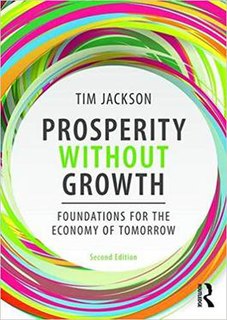 W
WProsperity Without Growth is a book by author and economist Tim Jackson. It was originally released as a report by the Sustainable Development Commission. The study rapidly became the most downloaded report in the Commission's nine-year history when it was published in 2009. The report was later that year reworked and published as a book by Earthscan. A revised and expanded edition was published in January 2017.
 W
WReinventing Fire: Bold Business Solutions for the New Energy Era is a 2011 book, by Amory B. Lovins and the Rocky Mountain Institute, that explores converting the United States to almost total reliance on renewable energy sources, such as solar energy and wind power. Lovins says that renewable energy is already cheaper than fossil fuels and his analysis predicts further reductions in renewable energy prices.
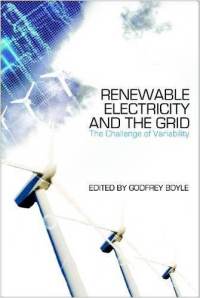 W
WRenewable Electricity and the Grid: The Challenge of Variability is a 2007 book edited by Godfrey Boyle which examines the significance of the issue of variability of renewable energy supplies in the electricity grid.
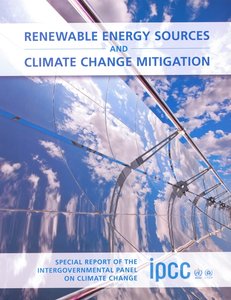 W
WThe United Nations Intergovernmental Panel on Climate Change (IPCC) published a special report on Renewable Energy Sources and Climate Change Mitigation (SRREN) on May 9, 2011. The report developed under the leadership of Ottmar Edenhofer evaluates the global potential for using renewable energy to mitigate climate change. This IPCC special report provides broader coverage of renewable energy than was included in the IPCC's 2007 climate change assessment report, as well as stronger renewable energy policy coverage.
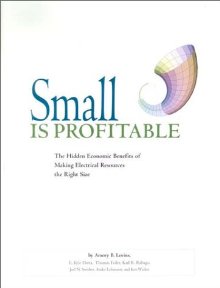 W
WSmall Is Profitable: The Hidden Economic Benefits of Making Electrical Resources the Right Size is a 2002 book by energy analyst Amory Lovins and others. The book describes 207 ways in which the size of "electrical resources"—devices that make, save, or store electricity—affects their economic value. It finds that properly accounting for the economic benefits of "distributed" (decentralized) electrical resources typically raises their value by a large factor, perhaps tenfold, through improved system planning, utility construction and operation, and service quality, and by avoiding social costs. This should change how distributed resources are marketed and used, and make policy and business opportunities explicit.
 W
WThe Solar Electricity Handbook is a yearbook written by eco-technology author Michael Boxwell. It is a beginners technical manual for people looking to learn about solar energy and how to generate electricity from photovoltaic panels.
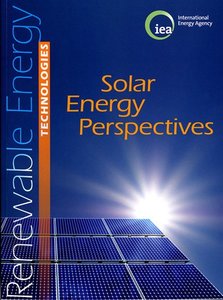 W
WSolar Energy Perspectives is a 2011 book by the International Energy Agency.
 W
WThe Solar Generation Childhood and Adolescence of Terrestrial Photovoltaics is a 2018 book by Philip R Wolfe published by John Wiley & Sons and the IEEE. It describes the early years of the solar power sector, covering in particular the years between 1973 and 1999.
 W
WStraight Up: America's Fiercest Climate Blogger Takes on the Status Quo Media, Politicians, and Clean Energy Solutions is a book by author, blogger, physicist and climate expert Joseph J. Romm. A Fellow of the American Association for the Advancement of Science and former Acting Assistant Secretary of the U.S. Department of Energy, Romm writes about methods of reducing global warming and increasing energy security through energy efficiency, green energy technologies and green transportation technologies.
 W
WThe Third Industrial Revolution; How Lateral Power is Transforming Energy, the Economy, and the World is a book by Jeremy Rifkin published in 2011. The premise of the book is that fundamental economic change occurs when new communication technologies converge with new energy regimes, mainly, renewable electricity.